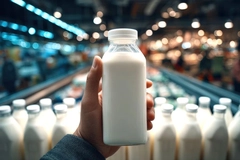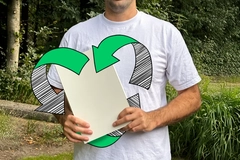World Environment Day 2025: Global push against plastic pollution amid rising waste concerns

Today’s World Environment Day focuses on solutions to the global plastic pollution crisis and underscores the need for collaboration.
Among the various institutions joining the campaign, The Consultative Group on International Agricultural Research (CGIAR), a global partnership focused on sustainable food, land, and water systems, is advancing innovations, including the development of biodegradable films that fully degrade in soil within 12 weeks.
Research by CGIAR’s WorldFish and its partners has revealed high levels of microplastics in dried fish, a major food source for communities along the Indian Ocean coastline. These findings raise food safety concerns and highlight the potential risks to human health from microplastic contamination in the marine food chain.
Thailand, one of the countries bordering the Indian Ocean, plays a key role in addressing plastic pollution through scientific innovation. Researchers from the Alliance of Bioversity and CIAT, a CGIAR partner, have created biodegradable films from cassava starch, a cheap carbon source in the region.
Dr. Thierry Tran, a researcher at Alliance Biodiversity and CIAT, tells Packaging Insights: “Commercially, cassava film is in early stages. However, it is a promising innovation that offers a sustainable alternative to the issues caused by conventional plastics, in particular, the microplastic particles that threaten the health and quality of life of millions of low-income people in both rural and urban environments.”
 Research found higher microplastic levels in dried fish, a regional staple, compared to fresh fish in the Bay of Bengal (Image credit: CGIAR).Plant engineering offers new pathways
Research found higher microplastic levels in dried fish, a regional staple, compared to fresh fish in the Bay of Bengal (Image credit: CGIAR).Plant engineering offers new pathways
Genetic engineering may open doors to producing biodegradable polymers in plants, according to Klanarong Sriroth, the author of the CGIAR’s research.
“If biodegradable polymers could be synthesized in plants, like starch or lipid, the polymer’s cost should be competitive with those from more conventional sources.”
Cassava starch can be used in fermentation leading to the formation of some polymers such as polyhydroxybutyrate (PHB) or organic acids like lactic acid.
Experiments with transgenic tobacco, for example, have also expressed a bioelastic protein-based polymer.
“The film offers comparable strength to conventional plastic and is an effective moisture barrier for foods when starch is combined with polylactic acid, another biodegradable polymer. It is fully compostable and environmentally safe, so it does not contribute to plastics contamination,” says James Pursey, senior media specialist at CGIAR.
“Production costs are currently higher than conventional plastics due to low production scale and costs of raw materials. CGIAR is now collaborating with the private sector, manufacturers, and farming communities to reduce costs, enhance performance, and expand interest, especially while plastic contamination continues to impact ecosystems and human health.”
Disparities in waste management
As scientists race to innovate biodegradable alternatives in developing regions, new data reveals how developed countries are handling the plastic and waste they generate. According to Sensoneo, more than a dozen European countries reduced their waste.
According to Sensoneo, more than a dozen European countries reduced their waste.
The latest Global Waste Index, published by smart waste management solution provider Sensoneo on the occasion of World Environment Day, has revealed disparities in global waste generation and disposal practices across 38 member states of the OECD.
According to the Global Waste Index 2025, Austria is the global leader in recycling municipal waste, recycling 334 kilograms per capita, which is 42% of its total, before launching a national deposit return scheme.
Sensoneo notes that Israel and Chile are the two largest waste producers among OECD countries. Meanwhile, the US remains the largest generator of municipal solid waste, increasing its output from 811 kg to 951 kg per person. Of this, 447 kg is landfilled.
The index also highlights regional disparities within the US. California and Florida emerge as the most waste-generating states. According to Sensoneo, the five least wasteful states, largely in the Northeast and Midwest, reflect differences in local policies, infrastructure, and public engagement in sustainability efforts.
Progress is visible in select countries, according to Sensoneo. New Zealand, Finland, and Iceland recorded the most significant reductions in waste generation since 2022, cutting per capita waste by 173 kg, 128 kg, and 107 kg, respectively.
Switzerland stands alone in achieving zero landfill waste, with Belgium (1 kg), Finland and Estonia (2 kg), and Japan (3 kg) also posting minimal landfill rates.











